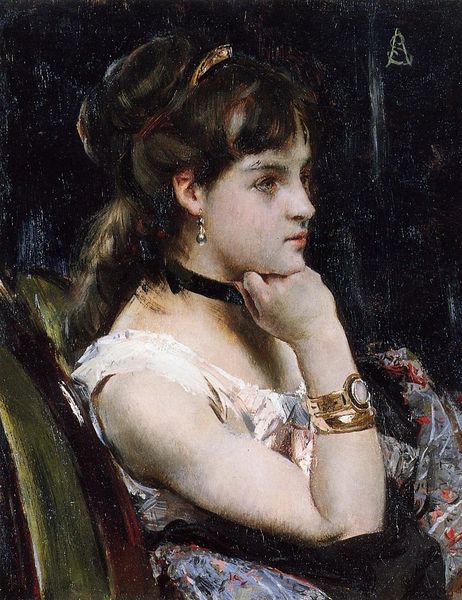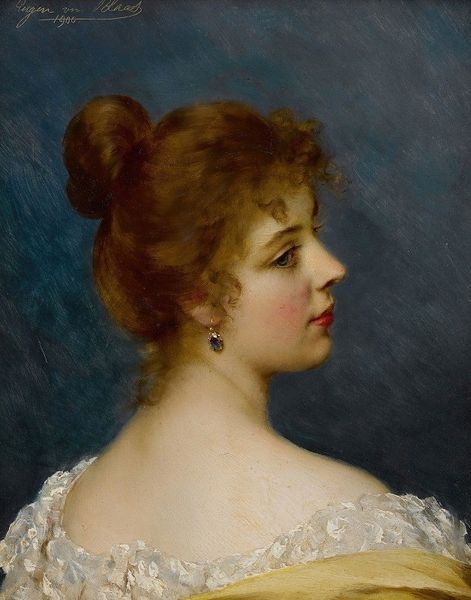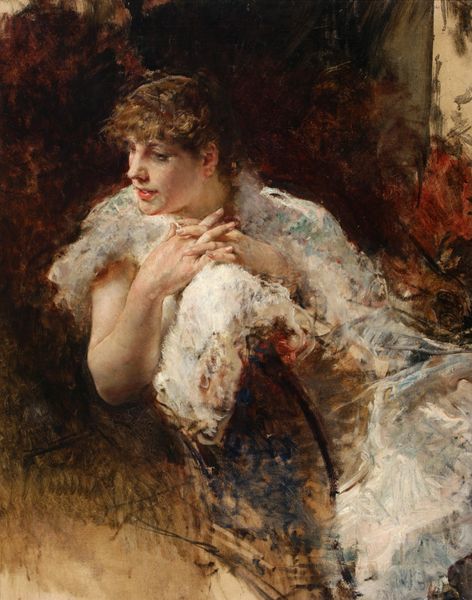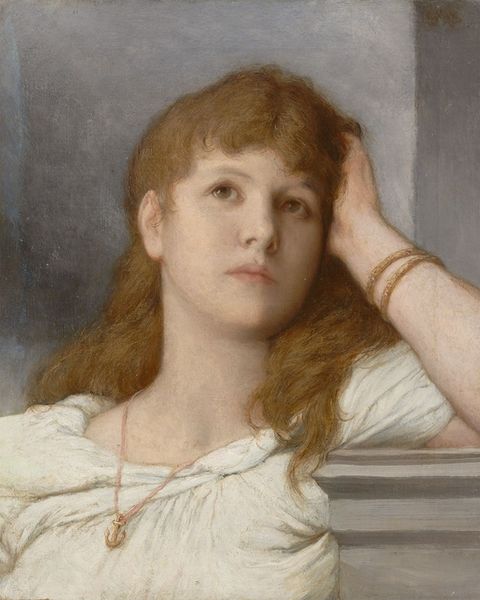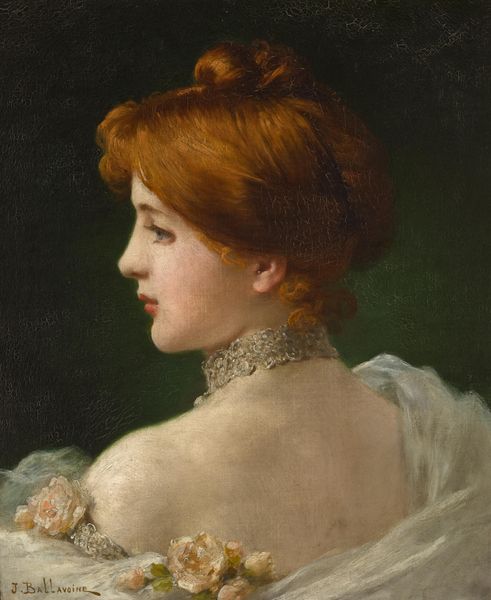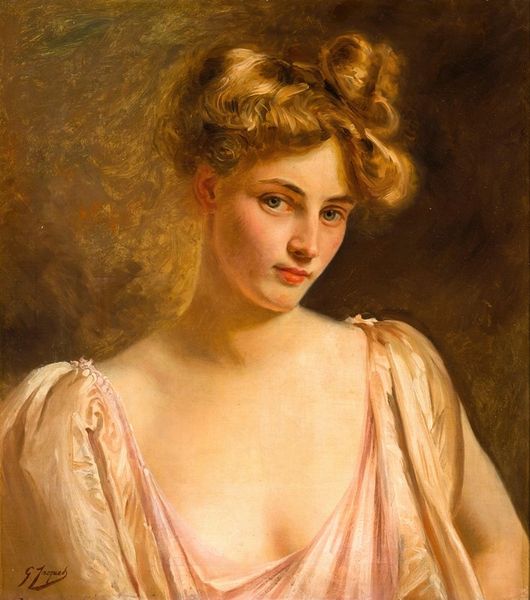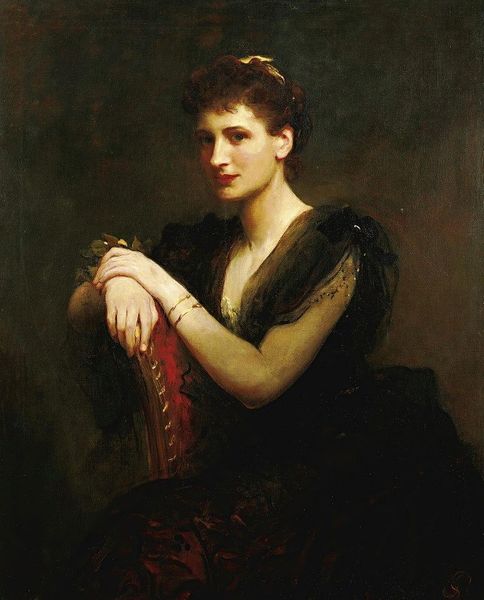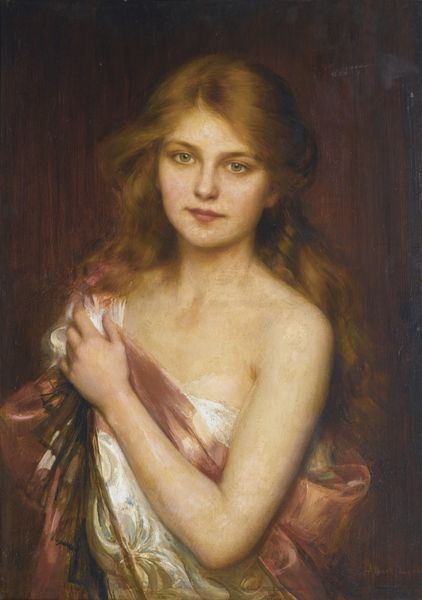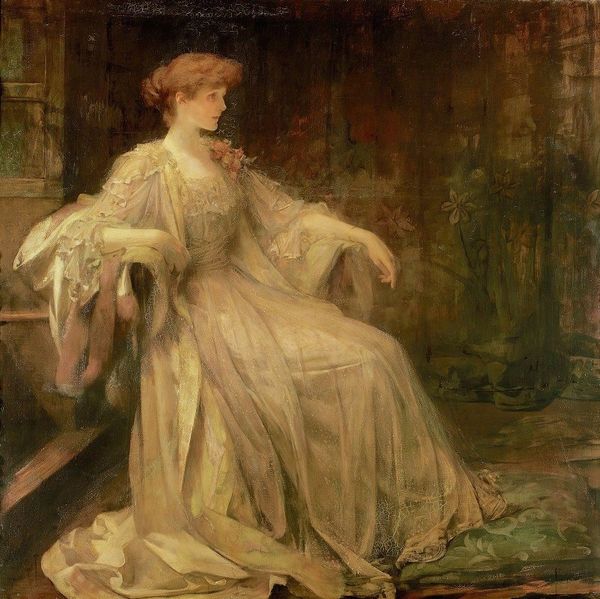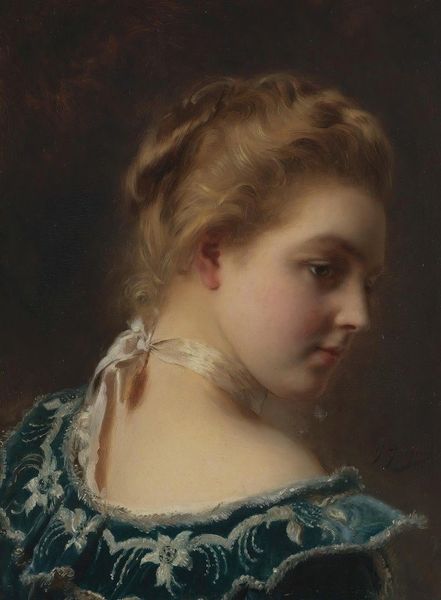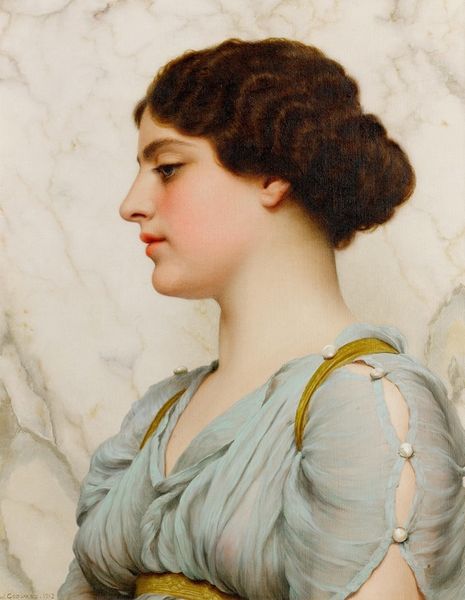
painting, oil-paint
#
portrait
#
figurative
#
painting
#
oil-paint
#
figuration
#
oil painting
#
orientalism
#
genre-painting
#
academic-art
#
portrait art
Copyright: Public Domain: Artvee
Curator: What a beautifully muted composition. It almost whispers its story. Editor: Indeed. This is Jean-Joseph-Benjamin Constant's "L'Orientale au Tambour," painted in 1880. It immediately places us within the Orientalist movement. But what do you make of her, this "Oriental woman"? Curator: Her stillness strikes me first. She's caught between worlds. The Western gaze, filtered through Constant's brush, gives her this air of both allure and quiet resignation. Her attire, the jewelry—they signify a cultural identity, but her introspective expression hints at something more internal, more complex. Editor: The layering is masterful here, no? The sheer fabric, allowing glimpses of skin and form beneath, acts almost as a visual metaphor for the layering of identity you’re describing. The careful construction of light and shadow adds to that feeling of an almost theatrical display. Curator: And the tambourine! That small, almost unassuming detail is actually rather significant. The musical instrument acts as an emblem of cultural practice and perhaps a sense of internal longing. She’s physically holding it, grounding the image with the performative aspect of culture, but she’s not actively playing it, which further complicates the narrative. Editor: The colors, too, are subtly doing the heavy lifting. Note the limited palette: the soft golds, creams, and the blues working against the dark backdrop. This careful control heightens the subject’s pallor and sense of detachment. Curator: Exactly. Consider the historical context of the era, especially France's colonial involvement. The Orient became this projection screen for fantasies and power dynamics. Constant presents this woman, yes, with obvious exoticism, but maybe also with a slight awareness of the Western construction that frames her existence. Her expression feels less about seduction and more about… recognition. Editor: A recognition, perhaps, of her own position within that framework. It makes you wonder, doesn’t it, what her perspective truly is? Curator: Absolutely. Though her voice isn't amplified within the painting, the cultural echoes of these symbols resonate powerfully. It's as if we’re decoding a shared history within this intimate moment. Editor: I appreciate how a focused gaze on composition encourages reflection not just on visual impact, but also on our historical perspective. Curator: It's a fascinating dance between the surface and the symbolism it conceals, creating echoes between cultures.
Comments
No comments
Be the first to comment and join the conversation on the ultimate creative platform.
